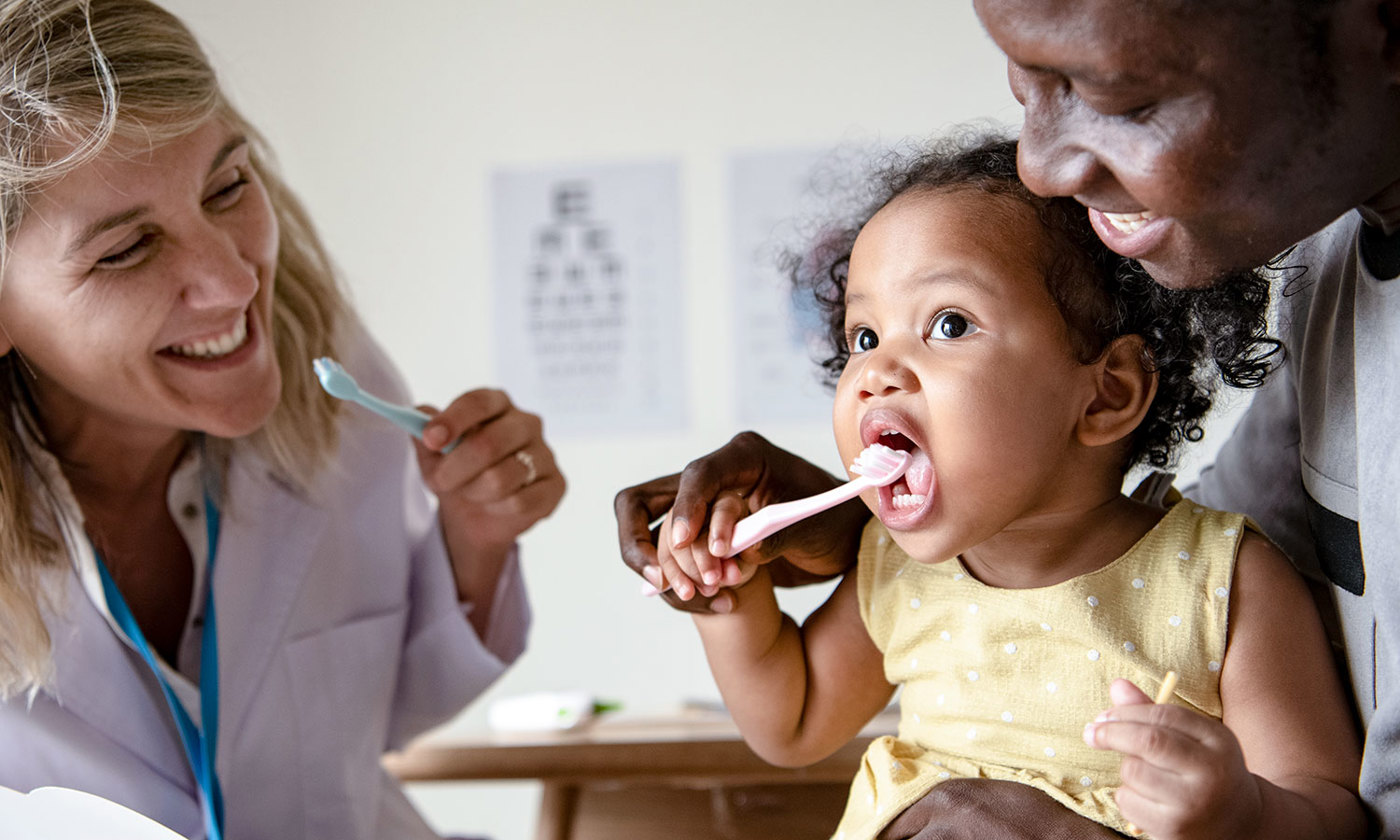Like what you see?
Sign up to receive more free parenting advice.
Thank you for subscribing to our newsletter!
Child Development

Credit: iStock.com/Rawpixel
Early childhood is critical in shaping later health and according to paediatric dentist Dr Mihiri Silva, oral health is no different.
Dr Silva, Senior Lecturer and Researcher at Melbourne University and Murdoch Children’s Research Institute says over a third of Australian children start school with tooth decay.
“Most tooth decay in pre-schoolers is untreated,” she says.
“Without treatment cavities can get worse, which can lead to pain, difficulty eating, teasing at school, infection and, at times, requiring emergency surgery due to severe acute illness.”
Child Dental Benefits Schedule
There is help available but just a third of eligible families use the Child Dental Benefits Schedule (CDBS).
In 2014 the Federal Government introduced the CDBS which provides up to $1,013 over two calendar years towards dental treatment for eligible children aged two to 17 years old – and now it’s been extended.
“It’s recently been announced that the scheme will become available for eligible children under two years old,” adds Dr Silva.
To be eligible families must receive a Centrelink payment at least once a year and dental treatments include check-ups, fissure sealants, radiographs or x-rays, fillings, root canal treatment and extractions.
Cosmetic treatment, orthodontics or treatments provided in hospitals are not included.
Dr Silva says while any funding directed at children’s oral health is a positive step, she wants it to be further extended to include dental treatments that require hospitalisation – which can be a huge barrier to getting help, particularly for young children.
“Young children with severe dental decay often can’t safely sit through multiple fillings, and hospitalisation is the only safe option to help them eat and smile like other children,” she says.
“Some children have special needs, some have phobias or may have weak teeth that often don’t respond to usual dental injections and anaesthetic, and so the CDBS urgently needs to expand to cover the families and treatments that need this financial assistance.”
Young children with severe dental decay often can’t safely sit through multiple fillings, and hospitalisation is the only safe option to help them eat and smile like other children.Dr Mihiri Silva
Stay up to date with the latest news and articles from First Five Years
Thank you for subscribing to our newsletter!
Our children’s biggest dental health issues
Dr Silva highlights that dental conditions are one of the main causes of preventable acute hospitalisation of young children.
The biggest dental condition that dentists see is tooth decay, particularly in primary aged children.
“We know that 34 per cent of children aged five to six years old have experienced tooth decay in primary teeth,” says Dr Silva.
“As a paediatric dentist, I also see a lot of teeth affected by developmental defects.
“The teeth just don’t form correctly and are weak and can break down rapidly, causing pain and infection.”
Another big challenge is the impact of sugar on children’s dental health.
“Our children are exposed to so much sugar advertising and helping busy families reduce sugar intake is a real challenge,” adds Dr Silva.
What can parents do about dental health?
Dr Silva says it’s essential to set up good dental habits early in a child’s life, as well as seek early preventative dental care from a dentist.
“Teeth need to be cared for as soon as they come through the gums,” she explains.
“Parents should brush their young child’s teeth for them.
“As a general rule, when your child gets their ‘pen licence’ they can brush their teeth themselves, but parents should still supervise them and check how and for how long they are brushing their teeth.”
And then there’s toothpaste!
“From 18 months of age, it’s really important that the toothpaste contains fluoride and there are age-appropriate toothpastes on the market for young children,” explains Dr Silva.
“Children can move to adult-strength fluoridated toothpaste from six years old, but depending on the advice from their dentist, some children may be advised to change to an adult-strength toothpaste earlier on.”
Dr Silva recommends that a child’s first visit to the dentist should be when their first tooth comes through, or at 12 months old, whichever comes first.
“It’s really important that the first dental visit occurs early, babies change so much in those early years, and this is the best time to make sure we help families set up healthy habits,” she explains.
Finally, Dr Silva recommends restricting a child’s sugar intake early.
“While it can be difficult for parents to limit the sugar intake of their children, it’s a cornerstone to setting up good dental habits.”
Australia’s 2020 Oral Health Tracker found:
- 70 per cent of children aged nine to 13 consume too much sugar according to World Health Organisation measures.
- Almost a third of five- to 14-year-old children are not cleaning their teeth twice a day.
- One in three children aged five to six had decay in primary teeth.
- One in four children aged five to ten have untreated tooth decay in primary teeth.
- Almost ten in every 1,000 children aged five to nine years old experienced a potentially preventable hospitalisation due to a dental condition.
- 44 per cent of children had not yet been to a dentist by their fifth birthday.







